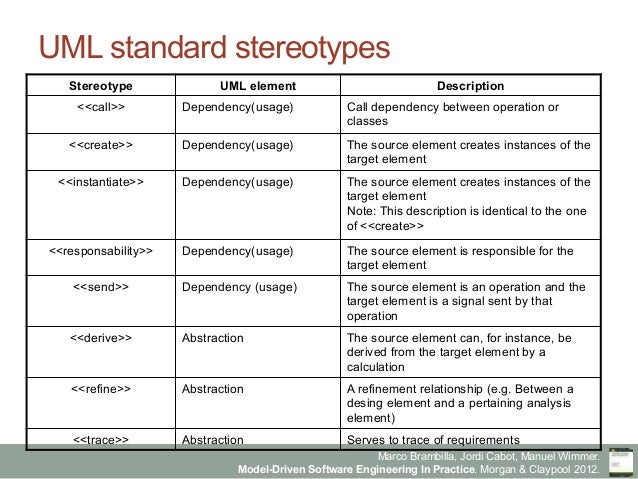Analysis Model In Software Engineering
Software Engineering — Software Process and Software Process Models (Part 2). The Reuse-oriented software engineering model. Component analysis. MODEL BASED SOFTWARE ENGINEERING Model based Software Engineering is the idea of achieving code reuse and perform maintenance and product development through the use of software modeling technology and by splitting the production of software into two parallel engineering processes namely domain engineering and application. Software Analysis & Design Tools - Learn Software Engineering Concepts in simple and easy steps starting. HIPO model was developed by IBM in year 1970.
Figure 1: Event analysis patternMartin Fowler describes this pattern as one that 'captures the memory of something interesting which affects the domain'. Describing an analysis pattern While doing Analysis we are trying to understand the problem. Fowler does not detail in his book a formal way to write or to describe analysis patterns. Suggestions have been raised since to have a consistent and uniform format for describing them. Most of them are based on the work from, Frank Buschmann and on patterns (in architecture or computer science). One of them, proposed by Hahsler, has the following structure:.
Pattern name: a pattern name should really reflect the meaning of what it is abstracting. It should be simple so that one can refer to it during analysis. Intent: the intent aims to describe the goal the pattern is trying to achieve. It should also describe the problem it tries to solve. Motivation: 'A scenario that illustrates the problem and how the analysis pattern contributes to the solution in the concrete scenario'.

Forces and context: 'Discussion of forces and tensions which should be resolved by the analysis pattern'. Solution: 'Description of solution and of the balance of forces achieved by the analysis pattern in the scenario in the motivation section. Includes all relevant structural and behavioural aspects of the analysis pattern.' .
Purao, Sandeep; Storey, Veda C.; Han, Taedong (September 2003). Information Systems Research, Vol.
Archived from on 2006-09-08. Retrieved 2007-01-31. ^ (1996-11-27). Analysis Patterns: Reusable Object Models. A pattern is an idea that has been useful in one practical context and will probably be useful in others. Analysis Pattern. Retrieved 2007-01-31.
^ Hahsler, Michael; Geyer-Schulz, Andreas (November 2001). Retrieved 2012-12-01.;;; (1995). Hardcover, 395 pages. Adobe ultra cs3 download. Addison-Wesley.
(1979). The Timeless Way of Building, volume 1 of Center for Environmental Structure Series. New York: Oxford University Press.Further reading. Haitham, Hamza & Fayad, Mohamed E. Computer Science and Engineering Dept., University of Nebraska-Lincoln.
Retrieved 2007-01-31. This paper on pattern language for analysis pattern was presented at the PLoP 2002 ( Of Programs annual conference). Buschmann, Frank; Regine Meunier; Hans Rohnert; Peter Sommerlad; Michael Stal (1996).
Pattern-oriented Software Architecture, Volume 1: A System of Patterns. John Wiley & Sons.
.!nc lud es tes ts tha t are c ondu cte d at the so ft war e interface.,ot co ncer ned wi th inte rna l log ica l stru ctu re of the software. ompl ements white-b o. Testin g by uncover ing di1er ent classes of errors. )o cus es on the f unct ion al r e2ui rem ents a nd the information domain of the software.
sed during the l ater s tages of te sting after white bo. Testing has been performed. +he te ste r iden ti0 es a set o f inpu t cond iti ons th at wil l fully e.ercis e all functional re2uirements for a program. +he test cas es s ati sfy the fol low ing:. 3 edu ce# b y a cou nt gr eate r than o ne# th e num ber o f additional test cases that must be designed to achieve reasonable testing. + ell us somet hing a bout t he pr esence or abs ence of classes of errors# rather than an error associated only with the speci0c tas( at hand.

4h it e- bo. Te st in g. /nowin g the intern al wo r(ing s of a pr oduct# test t hat al l internal operations are performed according to speci0cations and all internal components have been e.ercised.!nvo lve s test s that co nce ntra te on clo se e.a min ati on of procedural detail. 5o gic al pa ths th ro ugh th e sof twar e are te sted.
+ est case s e. Erci se spec i0c sets of cond itions and loo ps. se s the cont ro l struc tur e part of co mpo nent -le vel design to derive the test cases +hese test cases. ua rant ee that a ll in dep end ent pa ths wi thi n a modu le have been e.ercised at least once. E.e rci se al l lo gical decis ions on th eir t rue and false sides. E. Ecu te all lo ops at th eir bo und ari es and wi thin th eir operational bounds.
6r ovi des a 2 uant ita tiv e meas ur e of the lo gic al comple.ity of a program. De0 nes th e num ber o f ind epe nden t pat hs in t he ba sis set. 6r ovi des a n uppe r boun d for th e numb er of tes ts tha t must be conducted to ensure all statements have been e.ecuted at least once. a n b e c om pu ted th re e w ays. +h e n um be r o f r eg io ns.

Analysis Model Definition
78 9 E;, # w her e 6 is th e numb er of p re dic ate no des in the.ow graph . 3 esults in th e fol lowing e2uati ons f or the e.amp le.
ow graph.,u mb er of r eg io ns ? Ed ge s; = n od es ?